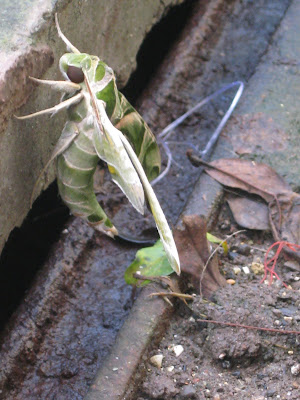The absence of ancient Hindu structures in Kashi is something I have always lamented about. The shrines are certainly ancient, and that is something that has always attracted me to the city. However, I miss the beauty of the ancient structures that we see at other sites. This feeling is intensified when I see marble and concrete and tiles in temples that once would have been beautifully adorned with evocative sculptures, and worn by the passage of time, touched by the hands of seekers who came before. This time , this desire to see some remnants of an ancient Hindu structure in Kashi came true when I managed to visit the Kardameshwar Temple. The Kardameshwar temple is not one of the main temples in the city. It is part of the temples on the Pancha Kroshi yatra, a pilgrimage which takes one on a circumambulatory tour of the whole city. The temple is located on the outskirts of the city, on the western bank of a tank called the Kardama Kund. The Kardameshwar temple is one of the...
Waiting for the school bus is usually boring, but in the rains, we have really begun looking forward to it, and even get ready early, just to see what we can see! Over the last few years, we have really developed a fascination for snails, so much so that samhith spots them wherever we go! But then, the monsoon brings us so many surprises, and there was another one for us a few days back.......
As we stepped out into our compound, we noticed this moth on the sewer cover - definitely a place we avoid... But this one was so interesting, we went to take a closer look......and many many pictures too....
It took me a while to identify this one, but Wikipedia informs me that this one is an "Oleander Hawk Moth", a migratory moth found in Asia and Africa, which flies off to Europe during the summer! And its caterpillar feeds solely on the leaves of the Oleander tree (the 'Arali' in tamil), which are highly toxic, but interestingly, these caterpillars are immune to its toxicity! Imagine seeing such an interesting insect in our backyard!



It looks beautiful and attractive. The wings have some kind of pattern resembling eyes and moth.
ReplyDeleteLooks very exotic!
ReplyDeleteIt is extraordinary! Wonderful!
ReplyDeleteThe color combinations on the moth are very nice. You have captured them beautifully.
ReplyDeleteanu
ReplyDeleteappreciating very much for yr observation...very thanks for the new information too...
Lovely!..
ReplyDeleteIts ncie to something out of the ordinary in a big city isnt it?
wow!
ReplyDeleteyu carry yr camera every where huh?!!
happy spotting...its wonderful for us!
The moth must be hard to spot when it is on a bush. Wonderful camouflage pattern and coloring.
ReplyDeleteAbsolutely beautiful!
ReplyDeleteHi! lovely pictures once again!
ReplyDeleteNature's way of protecting each creature.
ReplyDeleteThose eyes and the scary view that it depicts (in the first picture) is one way to scare away predators.
Yes I have heard about it and photographed the same. Your images are cool Anu...Thomas
ReplyDeletegreat shot
ReplyDeletethanks for sharing
WOW! Such a nice looking moth! Never heard or seen it before...thanks for sharing it with us...
ReplyDeleteIn the first photograph it looks like a monster. Some days back I spotted a very large green moth but unfortunately I was not carrying a camera.
ReplyDeleteGreat find Anu. Thanks for sharing!
ReplyDelete@Indrani: yes, they do...this type of moth apparently has eye-patterns to scare away predators!
ReplyDelete@Arun: I thought so too..... but then realised that its apparently quite a common one!
@Joy: yes, it was! thnks..
@Rajesh: thanks.....
@Aswathi Babu: thanks a lot!
@Meena: so true... we think of the city as a place with no relation to nature...but nature has a way of showing itself everywhere!
@Sowmya: thanks...well, not everywhere, but want to, at least!!
@Callie: yes, it would be... the colour of the leaf it loves on is exactly the same!
@Mridula: thanks....
@Usha: thanks... you are missing some wonderful stuff!
@Haddock: Absolutely!!
@Thomas: thanks.... I really thought of you while photographing and again while searching for its identity :)
@sm: thanks!
@Sankara: thanks.... neither had I!
@PN Subramanian: well, it does look a bit like a monster... but we are used to moths now.. so really dont think of it as scary any more!
@Celine: thanks!
i also have one of these can some one plz help me
ReplyDeletei found the informs about this on Montezuma's Insectopedia
ReplyDelete